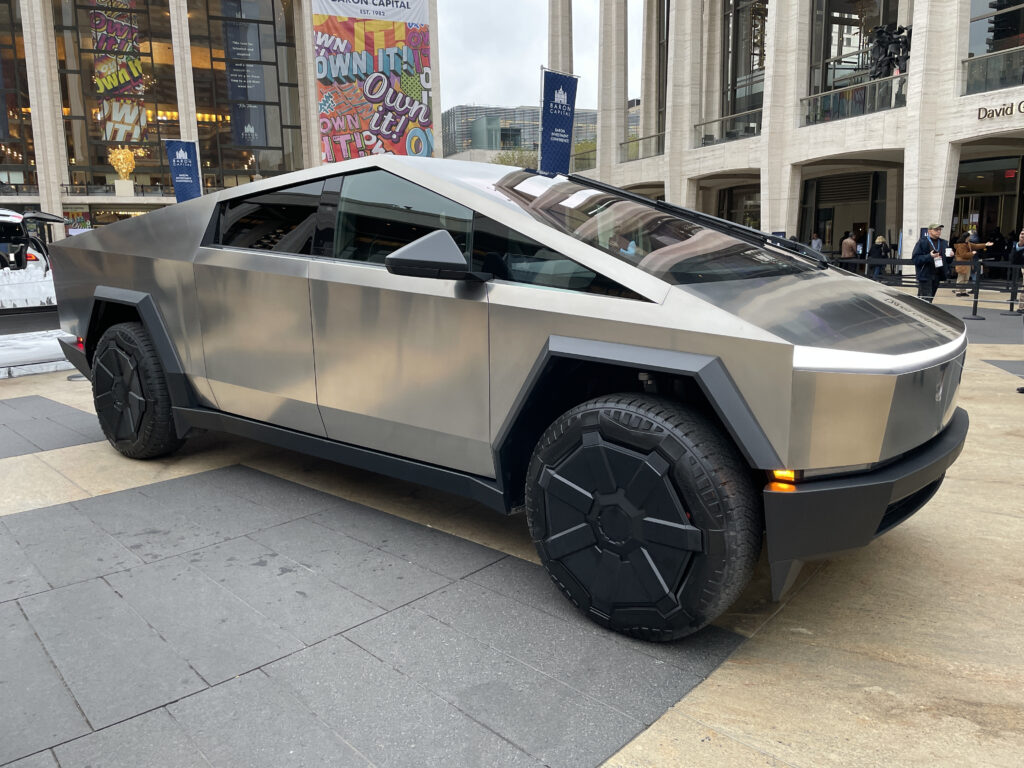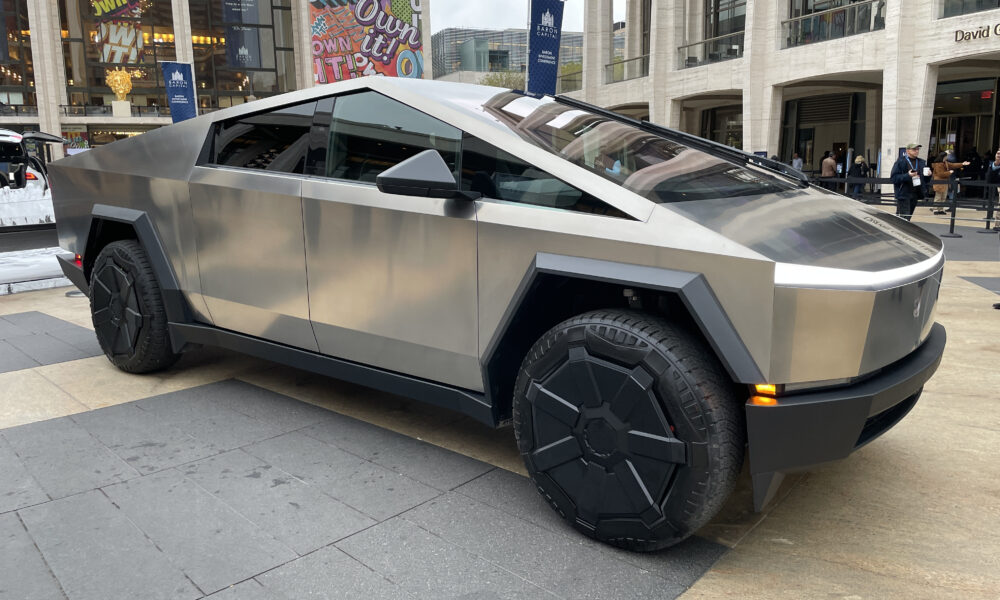Category: Ford Motors
Bauhaus Meets Blade Runner: Tesla’s New Cybertruck
 Arriving in time for the end of tailgating season, the Cybertruck, with its futuristic—if controversial—angular design, will certainly be a head-turner as deliveries begin. Originally unveiled in 2019 as a bullet-proof prototype that was not bullet-proof, the Cybertruck’s unique design aesthetic is a blend of Bauhaus and Blade Runner. The sports car-like pickup truck presents myriad manufacturing and component sourcing challenges, as stainless steel is difficult to form, bend, cut and weld. It is also difficult to maintain a uniform appearance. According to an internal email written by Tesla CEO Elon Musk in August of this year, “all part dimensions need to be to the third decimal place in millimeters and tolerances need to be specified in single digit microns.” As if to downplay this lofty objective, Musk went on to write, “If LEGO and soda cans, which are very low cost, can do this, so can we.”
Arriving in time for the end of tailgating season, the Cybertruck, with its futuristic—if controversial—angular design, will certainly be a head-turner as deliveries begin. Originally unveiled in 2019 as a bullet-proof prototype that was not bullet-proof, the Cybertruck’s unique design aesthetic is a blend of Bauhaus and Blade Runner. The sports car-like pickup truck presents myriad manufacturing and component sourcing challenges, as stainless steel is difficult to form, bend, cut and weld. It is also difficult to maintain a uniform appearance. According to an internal email written by Tesla CEO Elon Musk in August of this year, “all part dimensions need to be to the third decimal place in millimeters and tolerances need to be specified in single digit microns.” As if to downplay this lofty objective, Musk went on to write, “If LEGO and soda cans, which are very low cost, can do this, so can we.”
Like the original Ford Model T, the Cybertruck is available in just one color: in this case, unpainted stainless steel. Unlike any of the full-size pickup trucks available from Ford, GM, and Stellantis, which dominate the 2.5 million unit market in the U.S., the Cybertruck is, in the words of the announcer on Monty Python, something completely different.
First off, the Cybertruck looks like something that would be lowered from the Lunar Module to collect rocks on the moon, rather than a run-of-the-mill pickup truck that will haul and tow cargo for tradesmen. It remains unclear how resistant the car body will be to dings, scratches and outright dents, but we do know that ultra-hard stainless steel is difficult to repair, treat and restore to its original finish. This makes it impractical for hauling and towing construction equipment, as well as collecting moon rocks. And yet the Cybertruck is remarkably competitive with other EV pickup trucks on the market in terms of brute strength: it boasts a maximum tow capacity of 11,000 pounds, while its 2,500 pound maximum payload is almost 50 percent greater than the Rivian R1T, and a bit more than the Ford F-150 Lightning.
An important unresolved question is whether the Cybertruck will appeal to the sub-segment of the pickup truck market that is already purchasing an electric truck. If so, the numbers are not very encouraging. Of the projected 2.46 million pickup trucks that will be purchased in the U.S. this year, less than two percent, or something like 35,000 units will be either Ford F-150 Lightning or Rivian R1Ts.
Rivian has, in fact, seen its product mix shift heavily in favor of its full-size electric SUV, while Ford has announced plans to reduce its EV pickup truck volume for 2024, while also having vowed to double the number of Ford F-150 hybrid engine vehicles it intends to sell next year. All of this suggests that there may be less enthusiasm about EVs among both traditional and non-traditional buyers of pickup trucks.
Getting down the cost curve with a reasonable price for the Cybertruck will be key for Tesla to penetrate the market. Though the first wave of users is unlikely to be tradespeople, there is no reason that subsequent waves couldn’t be, given the truck’s towing and payload capacity, which is sure to improve over time. We are sure that Cybertruck version 5.0 will be quite different from previous versions.
Put differently, the more affordable Cybertruck becomes the bigger the market. At some point, though not today, the well-defined size of the pickup truck market will become relevant when the Cybertruck can breach the $50,000 or less entry level price point. Then the Cybertruck will be able to lay claim to its five-to-ten percent or more market share of the 2.5 million unit U.S. pickup truck market, which would equate to 125,000 to 250,000 annual units or more. Now it is only a question of time.

